Projects Academic, Courses and Contests
Low-Latency Pixel Stream based Image Processing
Goal
Investigate low-power, low-latency image/video processingMotivation
- Need for low-power, low-latency image-processing
- Wearable computer systems for human-machine Interface
- Explore power efficient complex algorithms ameniable to FPGA devices (Xilinx, Altera, Lattice Semiconductor)
Low-Latency Processing System:
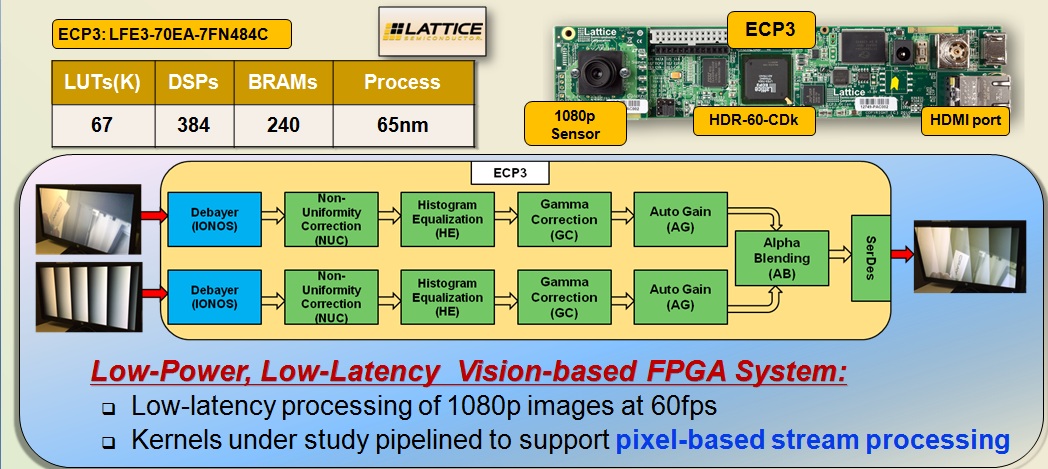
Pixel Processing Pipeline:
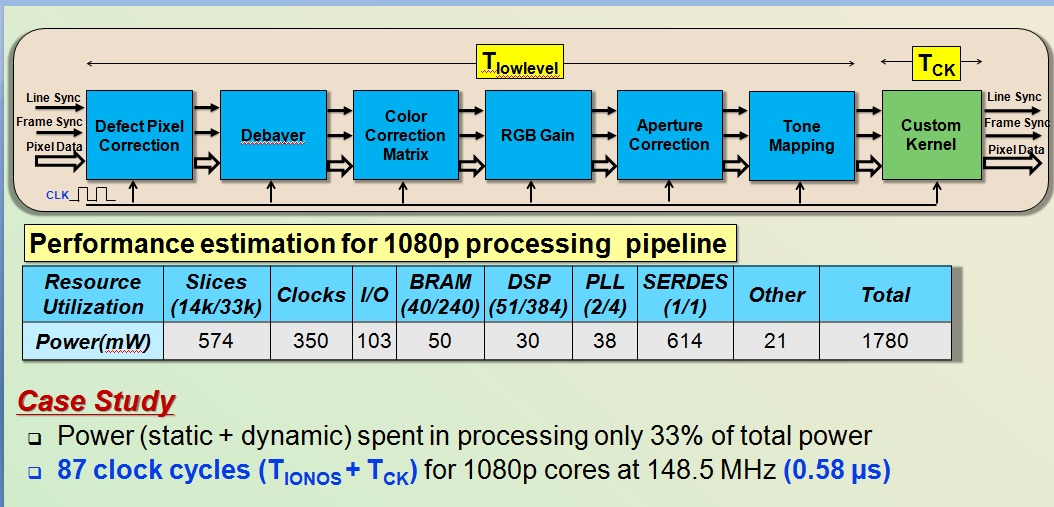
Pixel based Processing Algorithm:
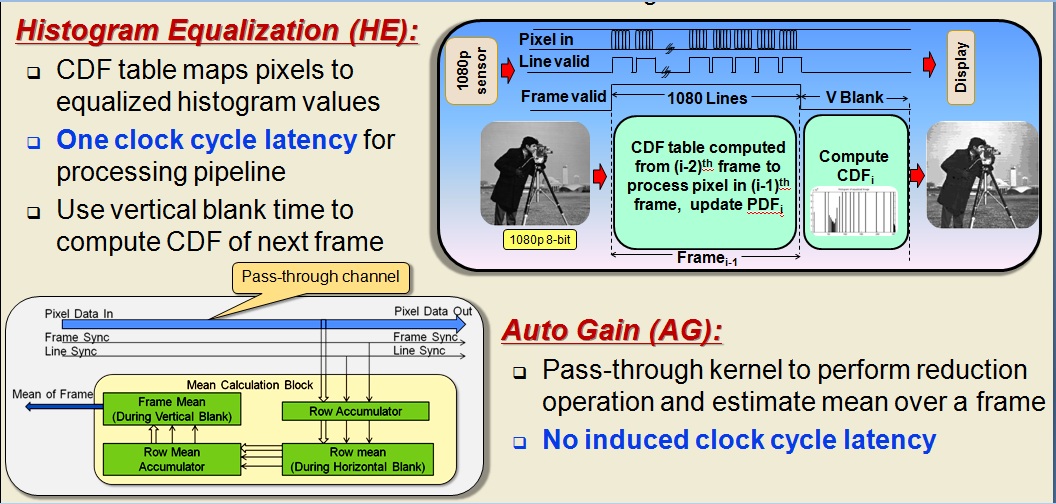
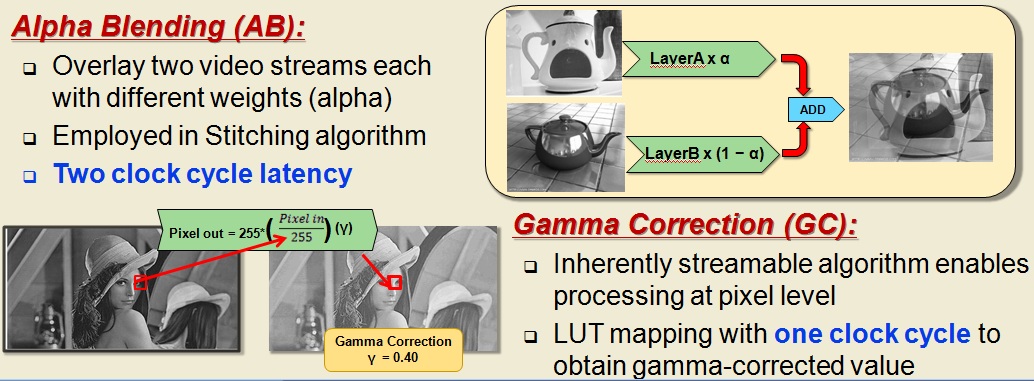
Performance Summary of Pre-Processing Kernels:
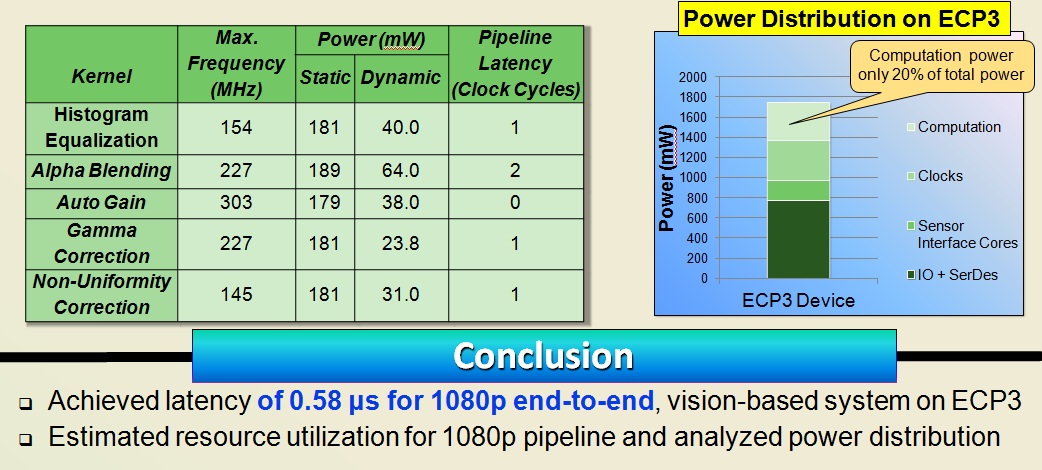
Algorithm Study for Feature-Extraction (Current Research):
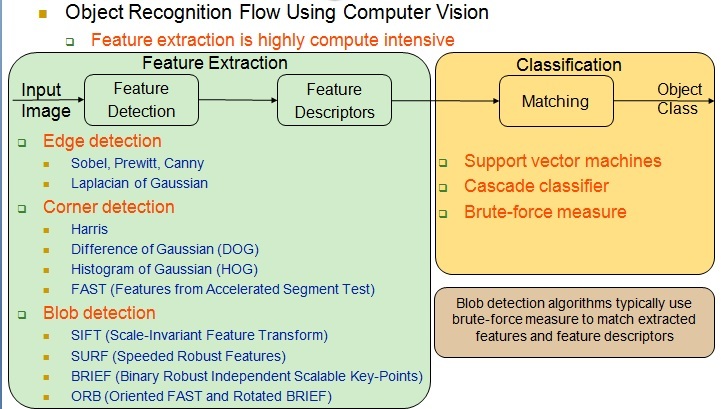
Coarse Grain Reconfigurable Multiply and Accumulate unit for DSP application
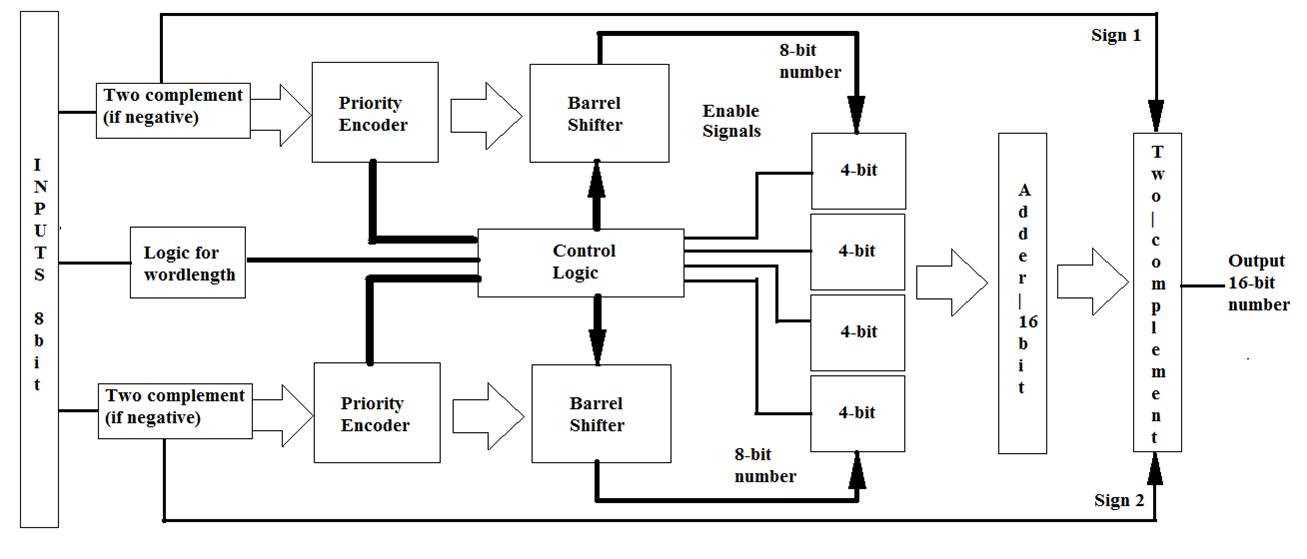
Block diagram of 8-bit multiplier architecture
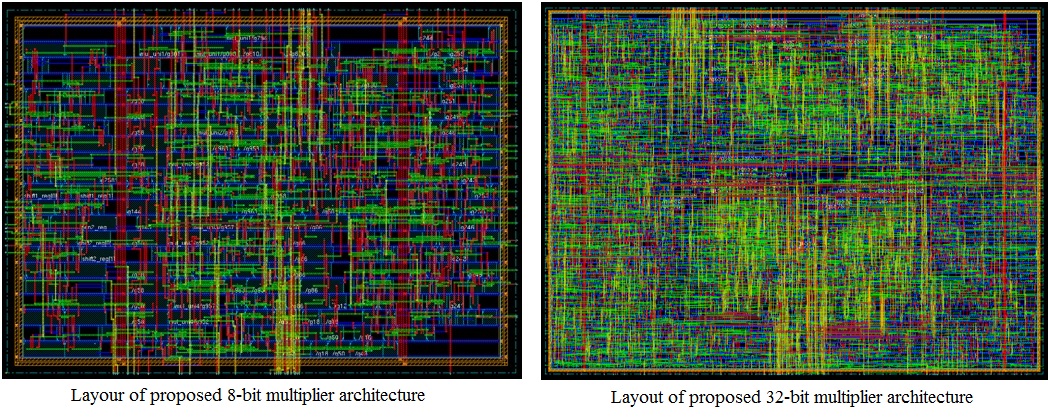
- Designed different coarse grain reconfigurable multiply and accumulate units improving it's efficiency in terms of power and worst case delay over the existing designs.
- In the proposed system, an N-bit precision Multiplier in the MAC unit architecture will consist of n smaller blocks of 2(N/n)-bit precision. For example, an 8-bit AU will consist of 4 nos. of 4-bit AU.
- Truncation logic used in this design will truncate higher precision input to lower precision based on the input wordlength. This increases the speed of operation and lower the power consumption of multiplier operation by compromising on the accuracy of ouput over the error free multipliers.
- This introduction of errors has observed to have increased the efficiency of processing without compromising much in the qualtiy of output. This has been proved by using this MAC unit in FIR filtering to perform unsharp masking on images (Results can be seen below).
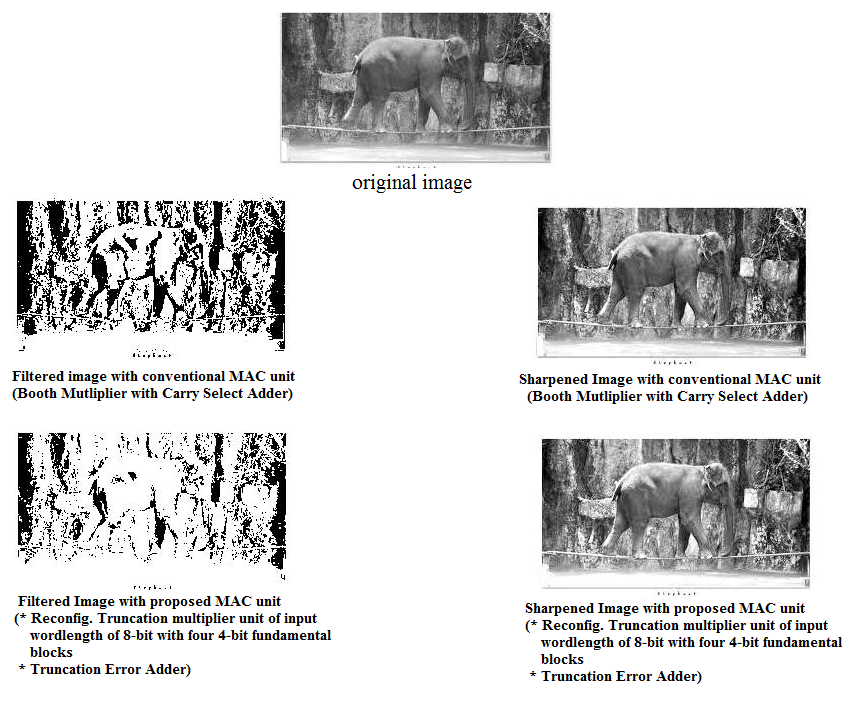
Concentration Zone/Delta correlation prefetcher for Multi-level Data Cache
Guide
Dr. Tao Li, Assistant Professor, University of FloridaAbstract
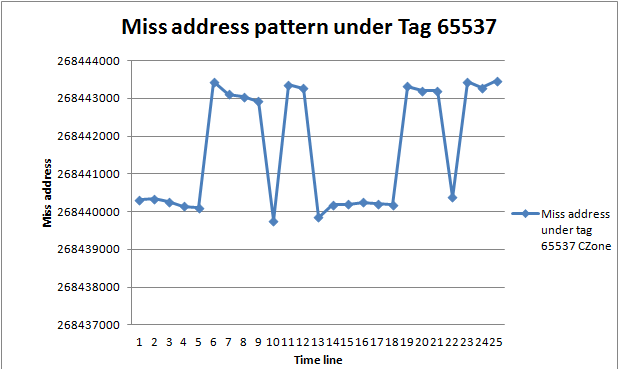
Tag miss reference patter under Tag 65531 |
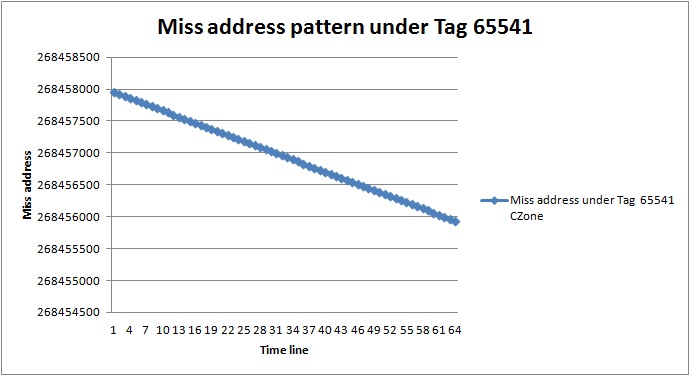
Tag miss reference patter under Tag 65531 |
Block diagram of complete system
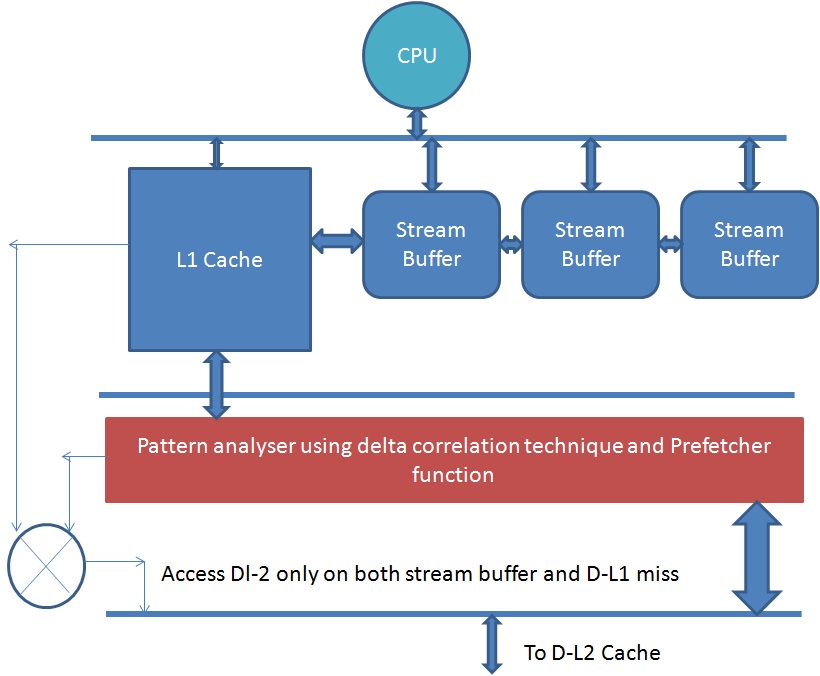
Complete Architecture
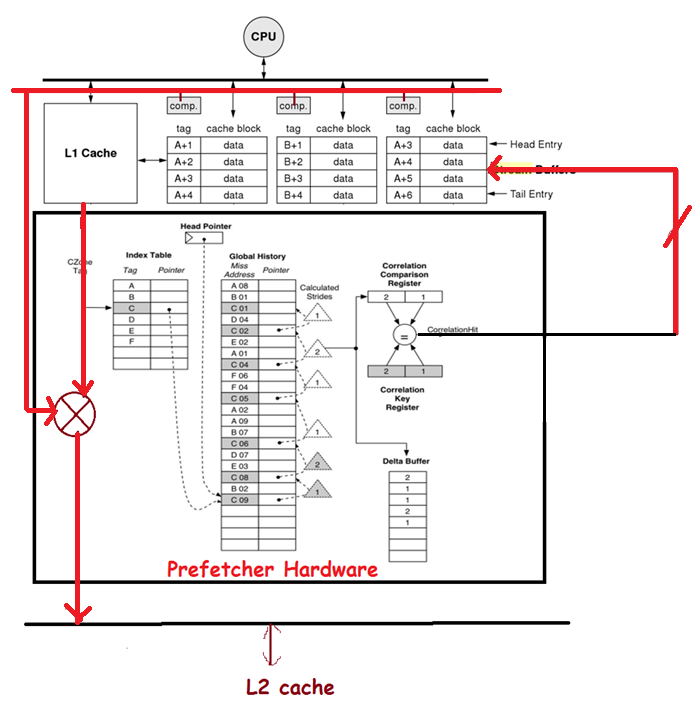
Comparison graph for simulation results of various benchmarks with and without prefetch architecture:
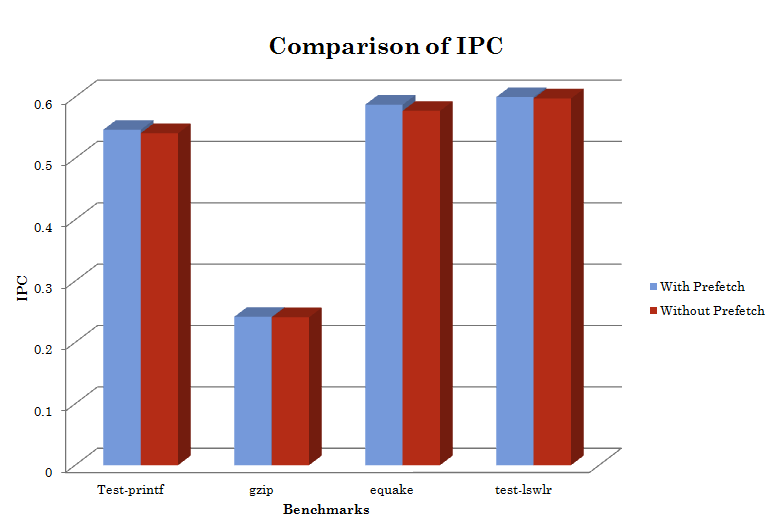
Power Flow Managment System
Guide
Dr.Saravana Ilango, Assistant Professor, NIT TrichyAbstract
This work aimed at maximizing the use of solar energy by charging the battery as well as by supplying it to the loads when in excess. This system is implemented using two subsystems namely a charge controller and a Power Flow Management System(PMS).
- The charge controller is used to control the power flow from the PV module to the battery by operating in two modes.
- The Maximum Power Point Tracking mode(MPPT) extracts maximum power from PV panels and the voltage control mode prevents overcharging of the battery.
- A control strategy is formulated in the PMS to criterion.
- The SoC is determined using coulometric measurements and is periodically recalibrated using Open Circuit Voltage method.
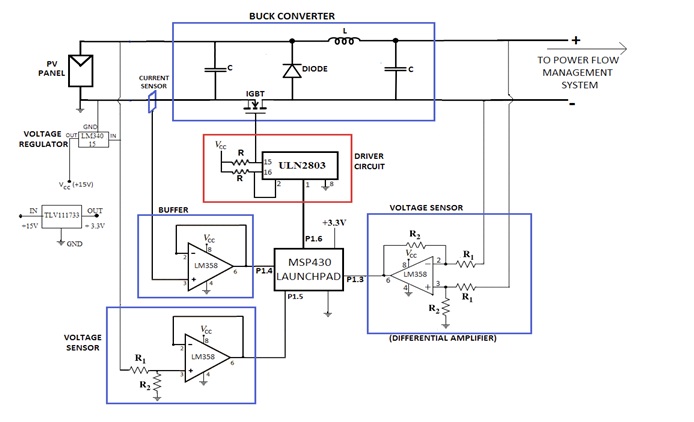
Schematic of Power Flow Management Module:
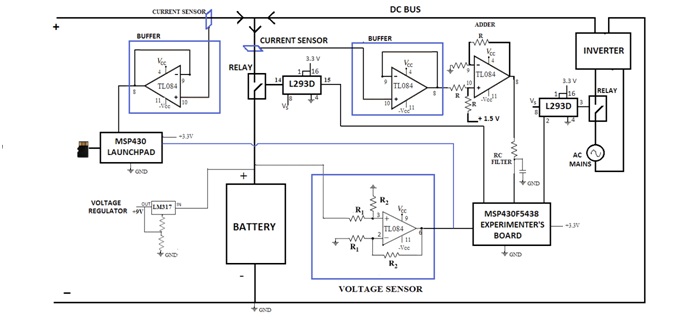
Complete Setup of the Proposed System:
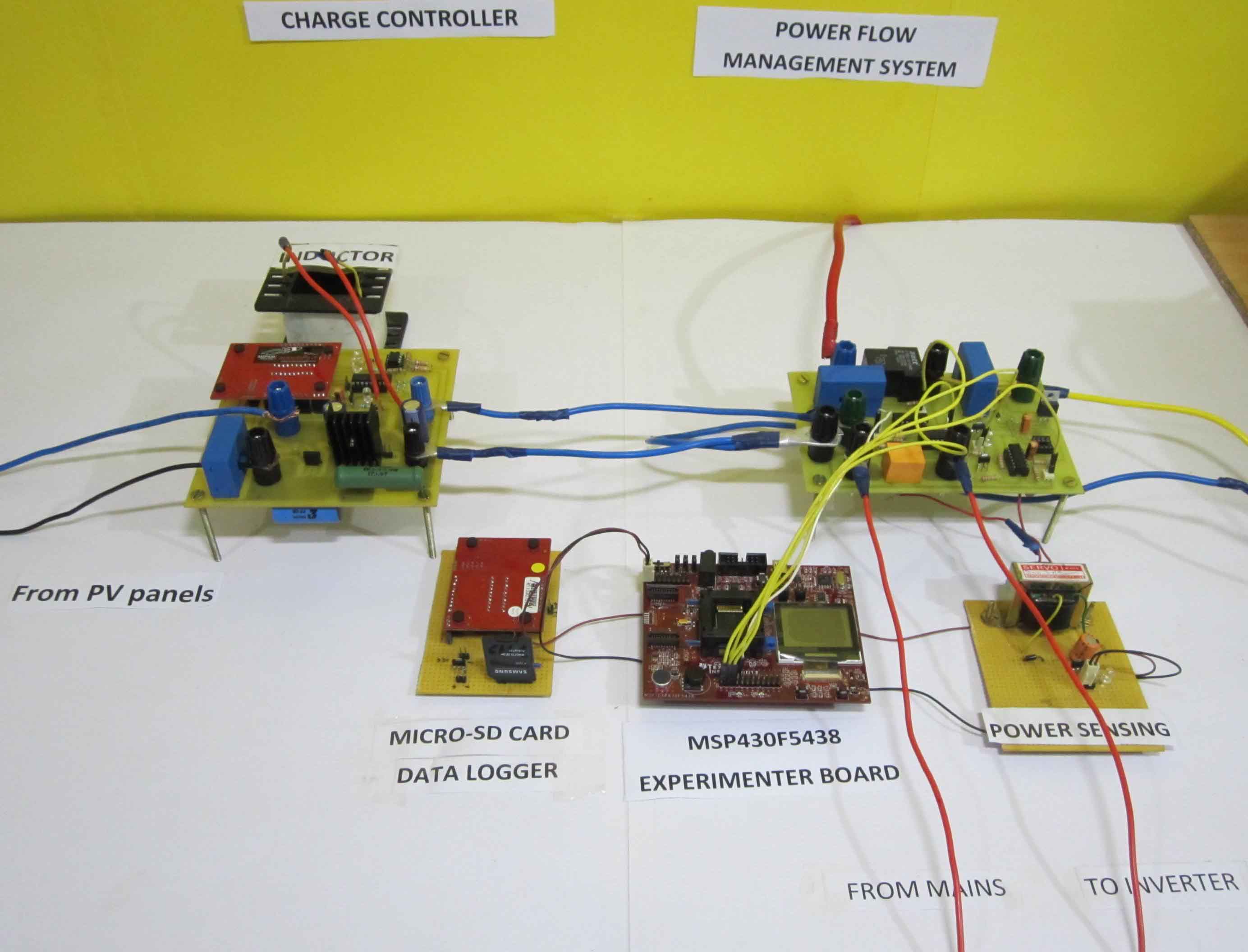
Project working demo:
Role of embedded controller in the smart system:
Micro-controllers employed in the system:
- The buck converter is triggered using Pulse-Width-Modulated (PWM) signals generated from MSP430 launchpad.
- The State of Charge (SoC) measuring algorithms and switching strategy were implemented using MSP430 Experimenter board (F5438A).
Control of Home Appliances from remote location
Guide:
Dr.M.Jaya Bharatha Reddy, Associate Professor, NIT Trichy(September 2011 - December 2011)Abstract
Developed a centralised monitoring system, capable of monitoring and controlling status of home appliances over Local Area Network using embedded systems.
- Developed a web application using HTML which displays the status of appliances in real time. The protocol used for the Local Area Network was TCP/IP protocol.
- An Arduino Ethernet shield was used as an interface between the router and microntroller to convert the data packets received from the server through TCP into 8-bit serial data which could be interpreted by a micro controller.
- A star topology was employed within microcontrollers each of which received control signal from any of clients in Local Area Network and performed triggering of relays controlling the status of individual appliances.
- An effective electrical circuitry was designed such that the appliances had control from both the web application and as well as from hardware switch.
Virtual Numpad
Implemented as a technical activity in SPIDER - 'R&D club of NIT Trichy'.Abstract
Designed and Developed a system using Image Processing based on edge detection algorithm and effective machine learning technique to identfy numbers written on a white such that they can be used as a digital input to any embedded system.
- A processing system with webcam take images at high frames per second and process them using edge detection and machine learning technique to identify the number over which the coloured object is placed emulating a physical click on the number.
- A portable device was fabricated which involved interfacing a character display to a microcontroller and a RF module to enable a wireless connectivity between system processing the Image and this device.
- Once the frame is processed the corresponding number is sent to the device through RF module at baud rate of 9600 through Universal Sysnchronous/Asynchronous transceiver/Receiver in Asynchronous mode (USART).
Image being processed at a particular instant and output is displayed in the device:
FPGA based Micro-Grid Controller employing Space-Vector Modulation Algorithms
Project proposed and sanctioned by Power Grid Corporation of India Limited (PGCL)Guide:
Dr.S.Moorthi and Dr.M.P.Selvan, Assistant Professors, NIT, Trichy- Designed and implemented efficient Space-Vector Modulation (SVM) algorithms on FPGA to generate Sinusoidal Pulse Width Modulation (SPWM) signals using VHDL.
- A micro-grid controller is developed to deploy the signals to operate single-phase and three-phase inverters in a grid, from a remote location through Ethernet.
Research Publications
Solar based Intelligent Battery Charging system compatible with existing Home Inverters
Guide
Dr.G.Saravano Ilango, Assistant Professor, NIT, Trichy
This paper has been presented in Texas Instruments India Educators Conference(TIIEC) an IEEE conference held at BangaloreAbstract
- The project involved design and implementation of Maximum Power Point Tracking (MPPT - Perturb and Observe Algorithm)
- Power Flow Management System which manages the power flow between solar panels, the load and inverter battery to maximize utilization of solar power being generated
- Battery Monitoring System in which an effective coulomb counting algorithm is implemented using TI MSP430 F5438A micro-controller to measure the State of Charge (SoC) of the battery with high accuracy.
| The publication can be found here. |
Ethernet based Industry Automation using FPGA
Guide
Dr.S.Moorthi and Dr.M.P.Selvan, Assistant Professors, NIT Trichy
This work has been presented in Africon 2013 an IEEE conference held at Mauritius and has been accepted for publishingAbstract
.The aim of this work was to develop an embedded system directed at automating appliances in an industry via Ethernet.
- The system employs server/client architecture; switching commands for the appliances which are connected to the client, were received and displayed at either end using TFT display.
- The data containing information about the control commands are transferred between the end points of communication using Transmission Control Protocol (TCP).
- The remote host processes the commands received and translates them into actions of switching particular appliances ON or OFF.
| The publication can be found here. |
Results:
This type of control system gives the liberty for control of appliances from remote locations connected through Ethernet. Moreover, this system is independent of dedicated PC as it uses a novel embedded system implemented on Field Programmable Gate Arrays (FPGAs).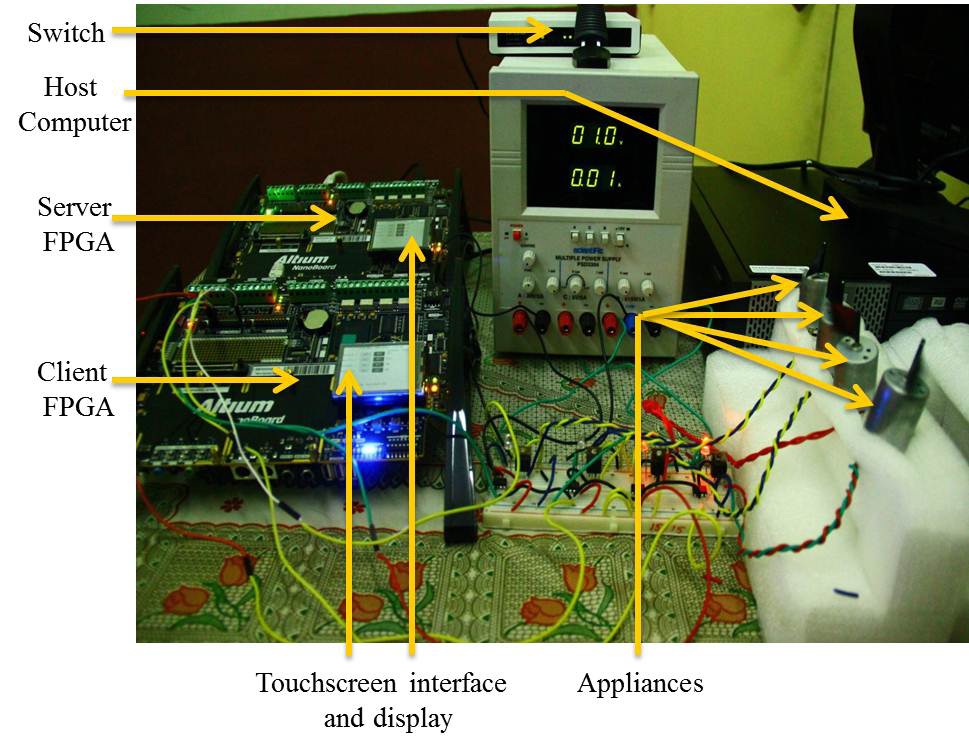
Industrial Research Internship
Indigo Quotient Labs [May - July 2012]
Guides
Adarsha SreeramareddyReal-time energy consumption measuring and monitoring device
Abstract
It is of essential that residential and industrial consumers of electrical energy should be aware of the energy being consumed by certain appliances and it's performance in terms of power factor in real time at greater accuracy. The existing residential Energy meters in India are incapable of measuring the apparent power thus measuring lesser quantity than it is being consumed.
- Real-time data processing from multiple sensor inputs
- Development of efficient algorithms to process analog data and measure the complex power being consumed.
- Real-time measurement of real power and apparent power, thus monitoring the power factor.
Infrared codes receiver and transmitter
Abstract
It was always necessary to automate existing home appliances and provide centralised controls to the user. The objective was to develop a system that could provide centralised online control for all the house hold appliances without making any hardware modifications in the appliance. This included
- Design and Developement of electronic circuit that detects the carrier frequency of the appliance's remote controller's IR signal.
- Development of emebedded system that detect and stores Infrared codes of the different control signals of the appliance.
- Designed and Developed Infrared transmitter which tranmits the stored digital signal modulation, involving Frequency Shift Keying.
Intelligent Lighting System
Abstract
In order to increase automation of the lighting system based on the lighting in the environment, a system which detects the human presence and also measure the luminous intensity in that vicinity was developed. Based on these data, the lighting systems are toggled to provide sufficient light during the presence of a human. The development of a system involved:
- Interfacing light sensor to Zigbee microcontroller to measure the ambient light intensity
- Interfacing Passive Infrared Sensor (PIR) sensors to Zigbee micro to detect the change in IR rays which detects the human motion in that environement.
- Developed efficient embedded code to automatize the lighting status in that region based on the information on luminous intensity and human motion obtained from the PIR and light sensors.
Results/Impact:
All of these projects focused on developing systems which will aid in conserving electrical energy and introduce automation in residencies and also an effective control medium.